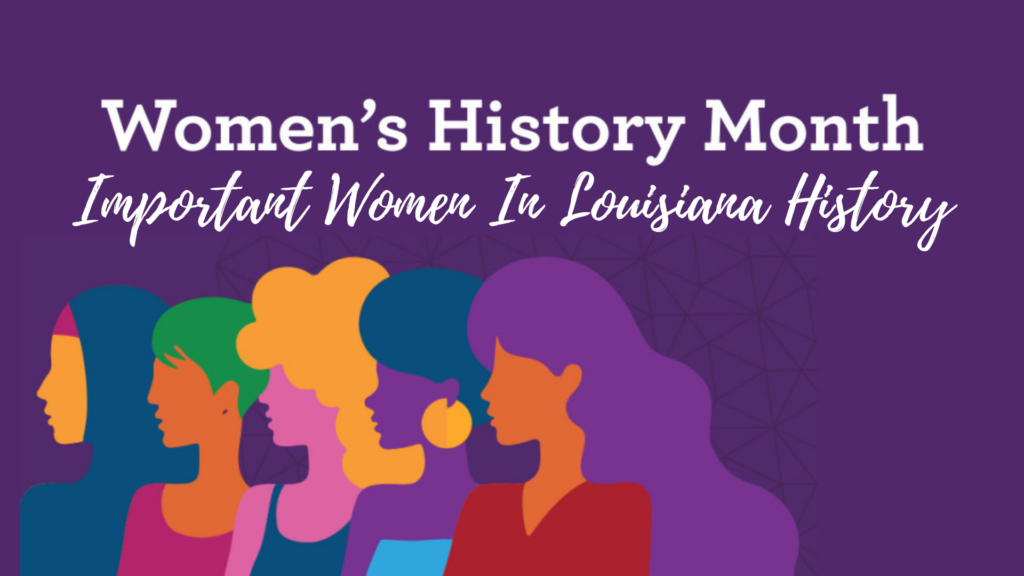In a state with the tallest state capitol building in the U.S., the world’s largest steel-constructed room unobstructed by posts (The Superdome), and the longest bridge over water in the world (Lake Pontchartrain causeway), you can only expect big things from the women who call Louisiana home.

Important Women In Louisiana History
Margaret Haughery (1813-1882)
Today, statues can be found in most large cities to celebrate the lives of residents who have made the city proud. Haughery was the first woman to be commemorated with a statue for her tireless social reform efforts.
Haughery lost her husband and only child to a yellow fever epidemic soon after arriving in New Orleans in 1835. What might have been disabling for many women of her day, Haughery went on to become founder of four orphanages and several homes for the elderly. She purchased cows to provide milk for the children and ended up selling milk from a cart throughout the city. In fact, LSU Libraries notes one of the orphanages was paid for, largely, through Haughery’s milk cart sales.
Kate Gordon (1861-1932)
Jean Gordon (1865-1932)
These sisters were two of the few suffragists in the South. In addition, they worked hard for social and political reform including, poor sewage and drainage, Child Labor Act of 1906, The Milne Home which was the first institution for mentally challenged children, day care, and Prevention of Cruelty to Animals.
Lillian Hellman (1905-1984)
As with most fields, theater was still male-dominated in the mid 1900s, but she is known as one of the greatest playwrights of her time. Eventually, she was blacklisted in Hollywood for her political views, but went on to New York where she continued to write and teach.
Sr. Henriette Delille (1813 – 1862)
Born in 1862, Sister Henriette was a Louisiana Creole of Color and Catholic nun from New Orleans. She founded the Sisters of the Holy Family in 1836 and served as their first Mother Superior. The order is the second-oldest surviving congregation of African-American nuns in the United States.
Mahalia Jackson 1912 – 1972
Born in New Orleans, Jackson was a gospel singer and widely considered one of the most influential vocalists of the 20th century. During a time when racial segregation was the norm in American society, she had considerable success selling close to 22 million records and performing in front of integrated crowds not only in the US, but around the world.
Ruby Bridges Hall (b. 1954)
In 1960, Hall was the first African American child to attend William Frantz Public School in New Orleans. Hall explains on the Ruby Bridges Foundation website, she and other African American kindergarteners in New Orleans were given a test to see who would be going to one of the new integrated schools. Hall passed, along with five other children. She was the only one to attend William Frantz.
Changing the world as a 6-year-old is a daunting task. Hall was delivered to and picked up from school by federal marshals every day of first grade. Escorted to and from the building to the jeers and nasty comments by protestors, Hall prayed to God each day to help her ignore the crowds. Many parents pulled their kids out of William Frantz that year.
Once inside the school, Hall was greeted by her teacher, Barbara Henry. Hall was her only student that semester and the two formed a close bond. With the support of Henry and her family, Hall successfully made it through that first stressful year. When she went back to William Frantz the next fall for second grade, the protesting had largely subsided and there were a couple more African American children in attendance.
Hall speaks about racism and education around the country.
Read More: Who are the 10 Most Famous Women in Louisiana History?

